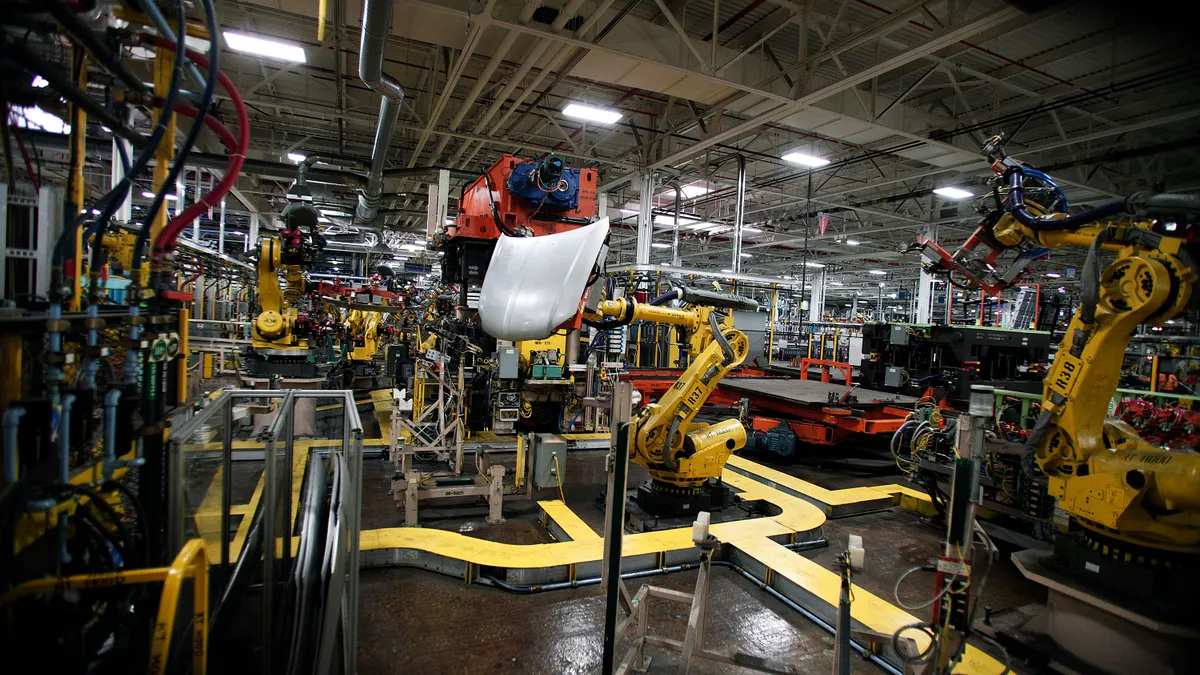Dive Brief:
- Most of the increase in U.S. wage inequality over the past 40 years can be attributed to declining wages experienced by workers in industries that automated rapidly, according to an October paper by researchers at the Massachusetts Institute of Technology and Boston University.
- The researchers found that the inflation-adjusted earnings of men without a high school degree dropped by 15% between 1980 and 2016. Automation particularly reduced wages for those working in industries such as manufacturing, where employers introduced numerical-controlled machinery and industrial robots. Those working clerical jobs in industries that introduced software-based automation were similarly affected.
- The paper presents “a more stark outlook” on automation’s impact on earning power compared to more nuanced outlooks, MIT said in a press release, but it “does not obviate other nontechnological theories completely,” Daron Acemoglu, an MIT economist and co-author of the paper, said in the release.
Dive Insight:
The findings come as organizations continue to build in pay increases for 2023. A recent Willis Towers Watson survey found that U.S. employers planned to boost salaries by 4.6% in 2023, up from 4.2% earlier in the year.
Despite the news, not all worker groups benefit equally. A 2021 analysis by the Conference Board found wage gaps between White and Black men, for example, were wider between those with a bachelor’s degree than those without. Moreover, Black workers were underrepresented in jobs and sectors that saw the largest increases in top earners during the preceding decade, the Conference Board said.
Meanwhile, worker shortages in recent months have led to some high-profile instances in which employers turned to automation where they lacked staff. This was the case for several major grocery store chains going into 2022, according to Grocery Dive. Later in the year, fast food brand White Castle made headlines for introducing robotic fry cooks in an effort to ease labor pressures, Restaurant Dive reported.
Federal data do not identify workers that are most at risk for job losses due to automation, according to an August report by the U.S. Government Accountability Office. However, the GAO noted that U.S. Census Bureau researchers have found that companies reporting a greater degree of technological adoption were more likely to report a greater increase in the skills needed to work at their companies.












